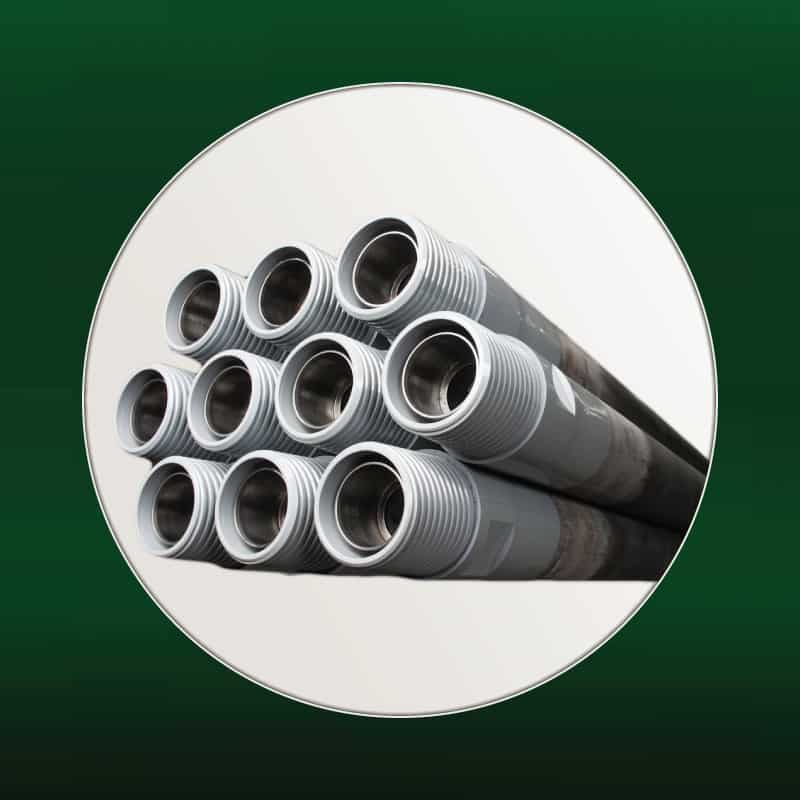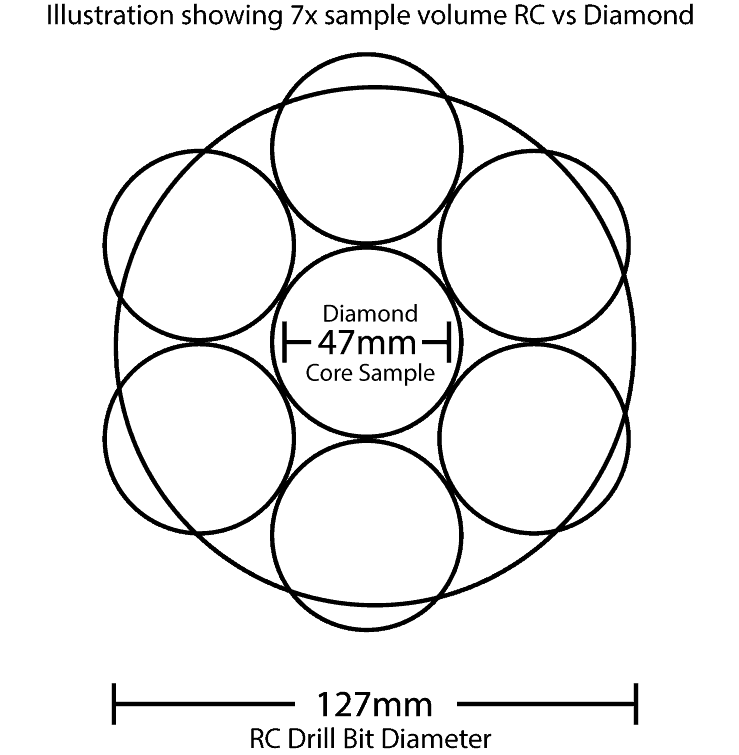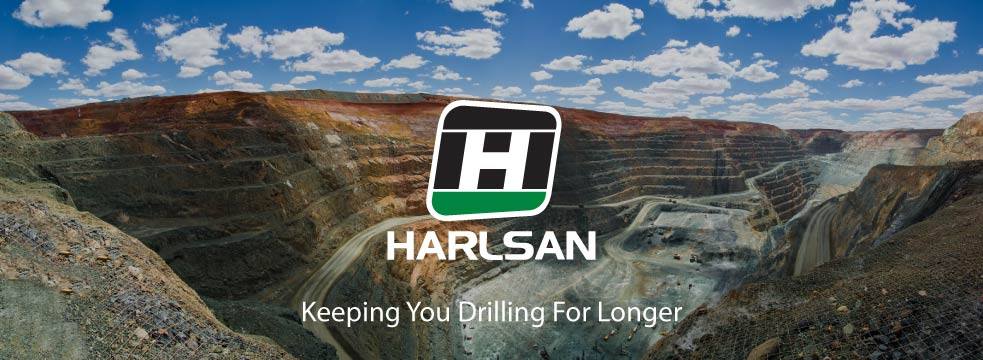How underground RC drilling turned around a Gold Mine
Using underground reverse circulation (RC) drilling at underground operations is a relatively new technique in the mining industry
In Australia, diamond drilling is synonymous with underground (UG) mining. This method utilizes a steady approach to extracting core samples to indicate where the valuable ore is located.
In contrast, using reverse circulation (RC) drilling at underground operations is a relatively new technique in the mining industry, with AngloGold Ashanti (ASX: AGG) being one of the early pioneers of the method at their Sunrise Dam project.

The adoption of underground RC at Sunrise Dam was to a degree, driven by necessity. One of the biggest challenges in defining the orebody at Sunrise Dam was the high nugget effect, where gold occurs as irregularly distributed coarse particles throughout the rock, rather than evenly distributed in all parts of the rock/sample.
This presented a problem for the traditional diamond drilling method that RC drilling could potentially overcome and in August 2012, Harlsan started supplying specially engineered equipment for underground RC drilling. Harlsan applied their knowledge and experience of RC surface drilling and engineered a drilling consumables product range adapted for underground RC.
Working closely with Sunrise Dam’s drilling contractor with engineered designs to suit their requirements, the collaborative process led to innovations providing a significant boost in mine productivity and profitability.
No time to read the full article? We’ve summed up the main benefits below.
Summary of Benefits of Underground RC Drilling
- Over 7 times increased sample volume and density
- 3-4 times faster than diamond drilling
- Cheaper than diamond drilling
- Assay data comes back 3 times faster than core
- High-quality assay data for robust grade control modeling
Case Study: The Benefits of Using Underground Reverse Circulation (RC) Drilling, with Sunrise Dam as a working example.
Reverse Circulation (RC) drilling is a technique that utilizes a percussive tool (hammer) which is driven by compressed air, supplied via a sealed drill pipe system.
As the hammer crushes the rock, the exhausted air then carries the rock chips through the internal pipe up to the rig for collection in sampling bags that record the sampling depth and location.
The samples are later assayed to determine mineralization and the results are then presented as a 3D map of the target resource.
RC Drilling Applications
Historically, RC drilling has been used extensively for surface drilling. Due to the speed, efficiency and lower costs when compared to diamond drilling, RC has been growing in popularity around the world, and is now being used for:
- Grade control sampling
- Exploration sampling
- Pre-collar drilling for exploration
- De-watering / depressurization drilling
- Blast-holes in radioactive (uranium) ground to control contamination
- Utility holes, stabilization, back filling
- Drilling in badly fractured ground / squeezing ground
Increasing Profitability for AngloGold
AngloGold pioneered the underground use of RC due to the constraints faced at their Sunrise Dam project. The nature of the ore body had led to difficulties in pinpointing the location of ore using conventional underground diamond drilling.
This issue was summed up by F Clark and J T Carswell in their paper to the 9th International Mining Geologists Conference.
“At Sunrise Dam, traditional UG sampling and modeling techniques have proven to be an unreliable strategy for successful stope planning and extraction. The problem was first observed during the final cut-back in the open pit for which the mineral resource model was constructed from UG diamond drilling. Open Pit grade control reconciliations were strongly positive for both tonnage and grade compared to the resource model. Underground workings missed significant quantities of ore which was laterally defined by open pit reverse circulation (RC) grade control (GC) drilling. Upon examination it was realised that the cause of the problem was one of inadequate sample density and sample support, the implications of which potentially affected the entire UG mine.”
Anglo Gold faced falling behind production targets and had gotten to the point where the future of the operation was potentially in doubt.
Underground RC Drilling Method Explored
Anglo Gold investigated the potential RC drilling could offer at its underground mine, Sunrise Dam.
Harlsan had previously worked together with a well-known Kalgoorlie based RC drilling contractor to design and develop specialty drilling equipment and supplies for underground RC drilling use.
This drilling company was employed by Anglo Gold to assist them at Sunrise Dam.
Multi-Directional Sampling
Using a Multi-Directional drilling rig inside an existing tunnel, Anglo Gold devised a process that would allow for RC drilling to be carried out.
The utilised rig was capable of 360-degree drilling using Harlsan 1.5 metre (5ft) rods.
The resulting sampling helped clarify the direction of ore seams, which in turn helped inform which direction future mining should take.
Larger Sample Size
RC drilling provides the advantage of a much larger sample volume when compared to a diamond core.
Instead of giving a sample which is approximately 47 millimetres (1.85in) in diameter, RC provides a sample of 127 millimetres (5in) in diameter. This results in a sample area over 7x larger than that of diamond drilling, a simple approximation can be seen in the illustration below.

Figure 1. Sample diameter RC drill bit vs diamond core
With the bigger diameter of an RC drill bit you get more representation of the sample and a better chance of picking up where the ore is located.
This was especially the benefit at Sunrise Dam. In effect, RC drilling provides a better sample result in gold ore bodies with a higher percentage of nuggets when compared to diamond core drilling.
High-Level Accuracy – Big Financial Implications
When used with a quality sampling system, the sample produced through underground RC drilling is homogenous and representative of the ground.
Additionally, the RC drill rod string is a sealed unit. Accordingly, the resulting consistency with low contamination risk means that underground samples collected from RC drilling are regarded as having a high level of integrity, providing high-quality assay data for robust grade control modeling.
An added benefit is that RC drilling assay data, on average, comes back 3 times faster than core analysis data.
Boost To Drilling Achieved Per Shift
As well as the increased sample area, RC drilling provides a significant production advantage over diamond drilling as it is up to 3-4 times faster.
Typically, a diamond shift might achieve a depth of 25 to 40 metres (80 – 130ft). RC drilling is significantly faster and can achieve 140-180 metres (460-590ft) of drilling per shift.
Underground RC drilling equipment has been used to achieve drilling distances of up to 300 metres (984ft).
Productivity increases of this scale meant that drilling teams could keep ahead of production targets, improving mine lifespan.
Underground RC Drilling Results
For Anglo Gold the results from UG RC drilling were extremely positive – as stated by Clark and Caswell:
To overcome inadequate sampling as a major constraint to effective grade control and reserve conversion,
“dense 115 mm wet RC grade control drilling and conditional simulation modeling has been successfully implemented with the intent to replicate the grade control process in the open pit. The increase in sample density and sample volume has proven to be a very effective tool for mapping out highly complex mineralisation. A marked improvement in stope definition, reserve conversion and Mine to Mill reconciliations has been demonstrated on the back of an innovative approach to UG grade control.”
As a result of underground RC drillings success, by November 2012, AngloGold’s Sunrise Dam had moved to full RC Grade Control and a complete turnaround had been achieved.
Wrapping It Up
Anglo Gold saw a complete turn around of their Sunrise Dam mine, thanks largely due to their innovative use of underground RC drilling.
Harlsan engineered and supplied specialty equipment for the drilling contractor responsible for carrying out the drilling at Sunrise Dam.
Harlsan experience in manufacturing tough Australian equipment, and collaborating closely with clients on their specialty projects, gives our customers a competitive edge.
References:
Using Reverse Circulation drilling to improve sampling in a complex underground gold operation – an innovative approach to underground grade control at The Sunrise Dam Mine, Western Australia,
Clark F, Carswell JT,
9th International Mining Geologists Conference
August 2013
Keep Up With Harlsan Product News & Innovation





 Youtube
Youtube LinkedIn
LinkedIn Facebook
Facebook Instagram
Instagram